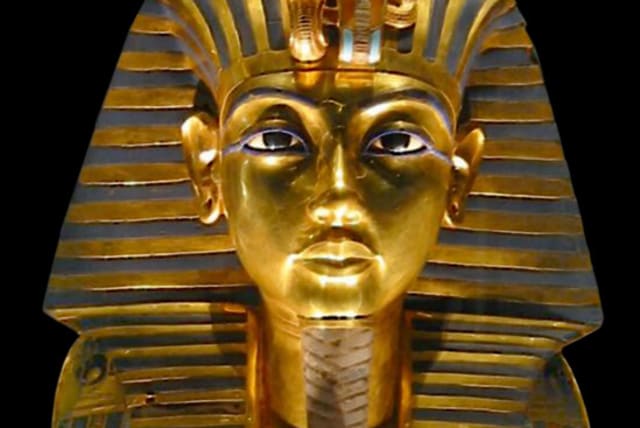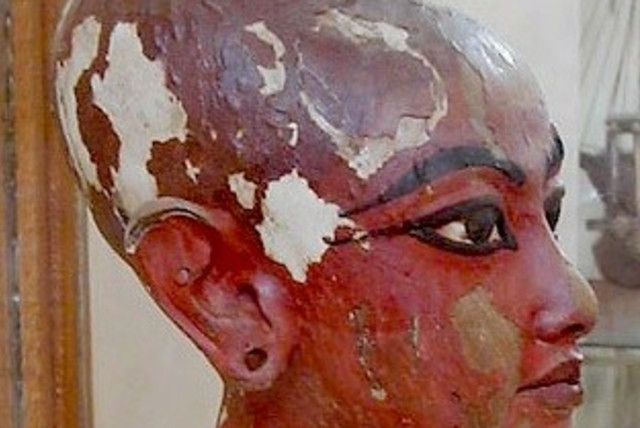New 3D computer generated a facial approximation of Tutankhamun - study

The new approximation showed his brain to be much larger than the average person's due to his elongated skull.
Using new 3D modeling techniques, researchers were able to reconstruct both the skull and soft tissue of Tutankhamun.
The peer-reviewed paper was published in the Italian Journal of Anatomy and Embryology earlier this month, and uses new computer modeling to reconstruct the pharaoh's face, which should provide more refined modeling for soft tissue. The study also states that the reconstruction of the ancient pharaoh's face was due to "datapublished in the biomedical and Egyptological literature."
Tutankhamun is one of the most recognizable Egyptian Pharaohs, his tomb was the first pharaonic tomb found undisturbed. He reigned from the age of nine for around ten years, during a pivotal moment in Egyptian history.
Tutankhamun was born Tutankhaten, meaning "the living image of Aten", in the 11th year of his father, Akhenaten's reign. Akhenaten is known for having introduced an early form of monotheism, where worship of all the traditional gods of Egypt was banned and only worship of the sun disc, Aten, was permitted.
This new form of Egyptian religion was short-lived, as by the end of Tutankhamun, Egypt had fully returned to its polytheist past, signified by Tutankhamun's replacement of Aten with the traditional Amun.
Although there is no concrete evidence of Tutankhamun's appearance, several attempts were made in the past to reconstruct his appearance.
Attempts at reconstruction
The first in 1983 was by forensic artist Betty Pat Gatliff, who reconstructed the pharaoh's face from a plaster skull created from radiographs of his face, according to the study.
A second attempt was made in 2005 when then-Secretary-General of Antiquities of Egypt Supreme Council Dr. Zahi Hawass, who presented the work of three coordinated teams who worked individually to create three separate reconstructions. An Egyptian team aware of the pharaoh's identity used 3D computer modeling, a French team also aware of the pharaoh's identity used the skills of anthropological sculptor Elisabeth Daynes, and an American team using a forensic sculptor generated an analog sculpture without knowing who the identity of the subject.
Although slight variations were present the sculptures were not so different from one another, leading Dr. Hawass to remark that they held a strong resemblance to the Head of Nefertem, a possible depiction of the young pharaoh as the sun god rising from the lotus blossom.
A third attempt was made in 2022 when tomographic scans were given to sculptor Christian Corbet, so he could create a facial reconstruction for PBS.
The researchers, taking advantage of these scans along with other fragmented data, reconstructed the young pharaoh's skull.
The researchers then took this reconstruction and began to create a 3D facial approximation. Using the necessary facial approximation technology they approximated his face. Other features were then adapted from the Head of Nefertem to give a complete approximation.
The most notable characteristic found by researchers was his abnormally large brain, which was nearly two standard deviations above normal, making it a significantly large brain volume. His skull and brain were likely elongated due to genetic causes rather than artificial skull elongation which was practiced by some ancient groups.
Jerusalem Post Store
`; document.getElementById("linkPremium").innerHTML = cont; var divWithLink = document.getElementById("premium-link"); if (divWithLink !== null && divWithLink !== 'undefined') { divWithLink.style.border = "solid 1px #cb0f3e"; divWithLink.style.textAlign = "center"; divWithLink.style.marginBottom = "15px"; divWithLink.style.marginTop = "15px"; divWithLink.style.width = "100%"; divWithLink.style.backgroundColor = "#122952"; divWithLink.style.color = "#ffffff"; divWithLink.style.lineHeight = "1.5"; } } (function (v, i) { });

